Egyptomania: The Victorian Obsession with Egypt
Mummy unwrapping parties, the Rosetta Stone, and the "curse" of Tutankhamun: how Egypt became a Victorian (and Edwardian) obsession.

In 1798, Napoleon Bonaparte, Commander-in-Chief of the Armée d’Orient, invaded Egypt. At the time, Egypt was ruled by the Mamluks and nominally controlled by the Ottoman Empire, but these groups were not Napoleon’s chief rivals. Whoever controlled Egypt controlled the Suez Canal, a crucial shipping route that connected the Mediterranean to the Red Sea. The goal was to undercut British trade routes to the nation’s colonial holdings in India; doing so would give France an enormous territorial advantage.
The Egyptian campaign ultimately failed, but it resulted in a major discovery—one that would transform the field of Egyptology and launch a public mania for all-things-Egyptian.
Several miles from the port city of Rosetta (modern-day Rashid) lies Fort Julien, constructed around 1470 during the rule of the Mamluk Sultan Qaitbay. Then-General Napoleon placed Lieutenant Pierre-François Bouchard in charge of rebuilding the fortress; it was during the demolition of a wall that Bouchard spotted what would become known as the Rosetta Stone.
The Rosetta Stone is a stele, or an upright stone slab, featuring an inscription of a royal decree issued on behalf of King Ptolemy V Epiphanes in 196 BC. Part of the decree is missing, as only a fragment of the original stele remains; its message was written by a council of priests in celebration of Ptolemy’s coronation. What made an otherwise typical royal decree so significant—and why the British were eager to wrestle it from French hands, which they did upon signing the Treaty of Alexandria in 1801—was that the decree was inscribed in three different languages. On top was hieroglyphic script, followed by Demotic script and Ancient Greek. For the first time, modern scholars would be able to translate Egyptian hieroglyphs.
This seminal discovery was ground zero for Egyptomania: a century of fascination and obsession with Ancient Egypt in Britain, France, and the United States.
Soon, British and French scholars, adventurers, and bureaucrats were scouring Egypt for antiquities, which were either purchased or looted and brought back to Europe. It was a manic free-for-all, motivated both by nonfiction accounts of Egypt by Egyptologists and travel writers, as well as mass market fiction that played on the ancient civilization’s mystical aura. This enthusiasm bled into the Egyptian Revival in architecture and decorative arts, in which the artistic styles of Ancient Egypt served as a source of inspiration for everything from public buildings and fountains to furniture, jewelry, picture frames, boxes, candelabras, and more.

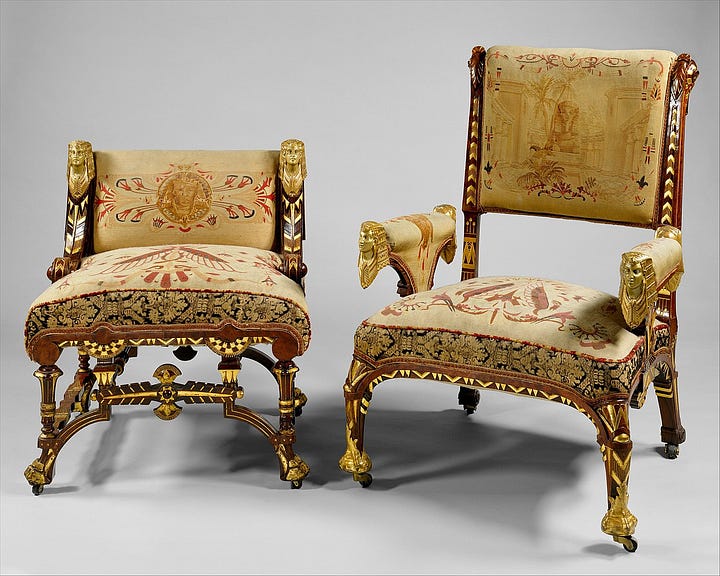
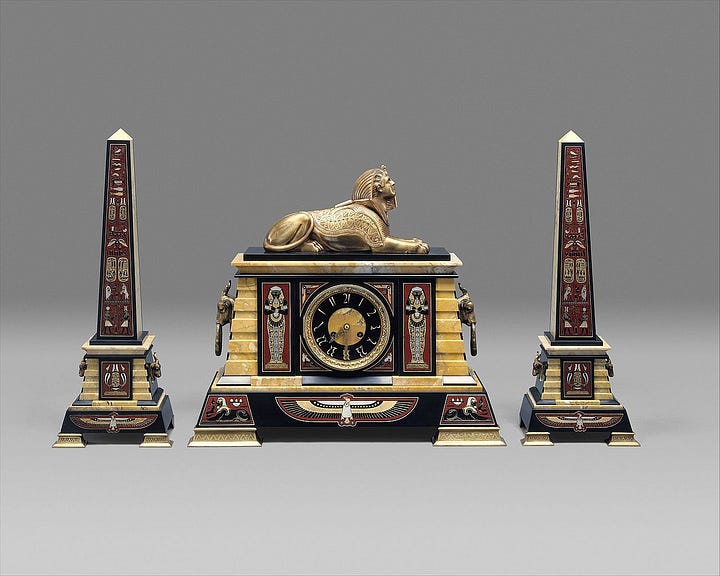
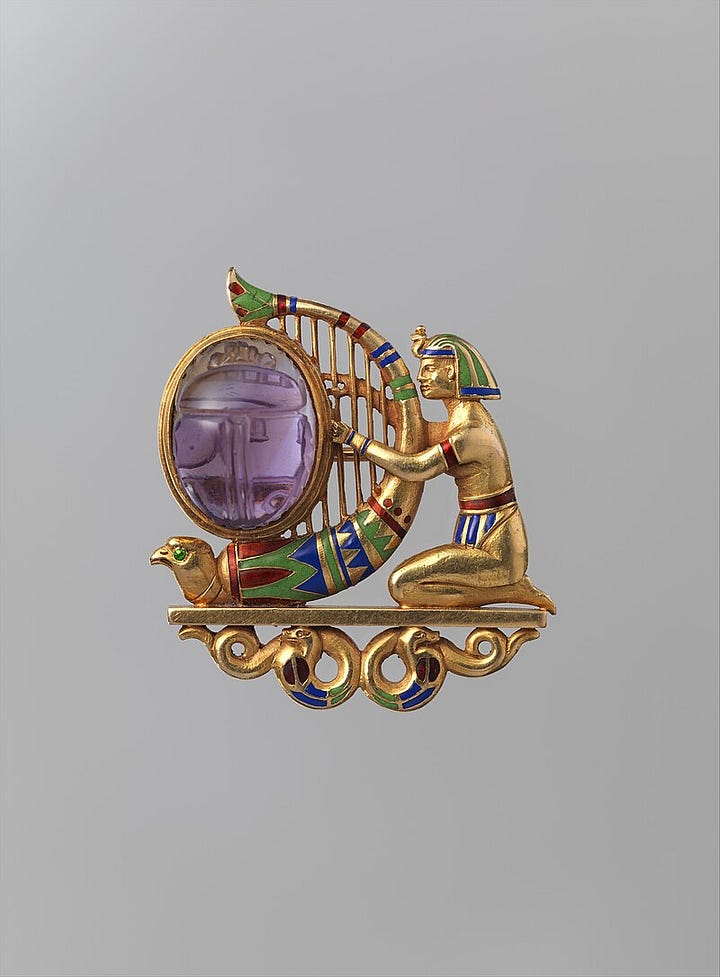
Fueling this popular image of Egyptian culture was Spiritualism, an occult movement of psychics, mediums, and believers that swept across both sides of the pond. As the public’s interest in Spiritualism grew, so did its appetite for anything adjacent to the occult. Ancient Egypt, with its mummies, Book of the Dead, and intricate mythology, was the perfect canvas on which contemporary Brits and Americans could project their own fantasies.
Enter mummy-unwrapping: if you couldn’t travel to Egypt, attending the unwrapping of an Egyptian mummy was the next best thing. As with a variety of artworks and artifacts, mummies were also brought to European museums and universities for public unveiling. These events ranged from sincere scientific exploration to entertainment and spectacle, and they drew enormous crowds. In some cases, mummy unwrappings were held in private homes, in which a very wealthy individual would purchase a mummy and host an unwrapping party.
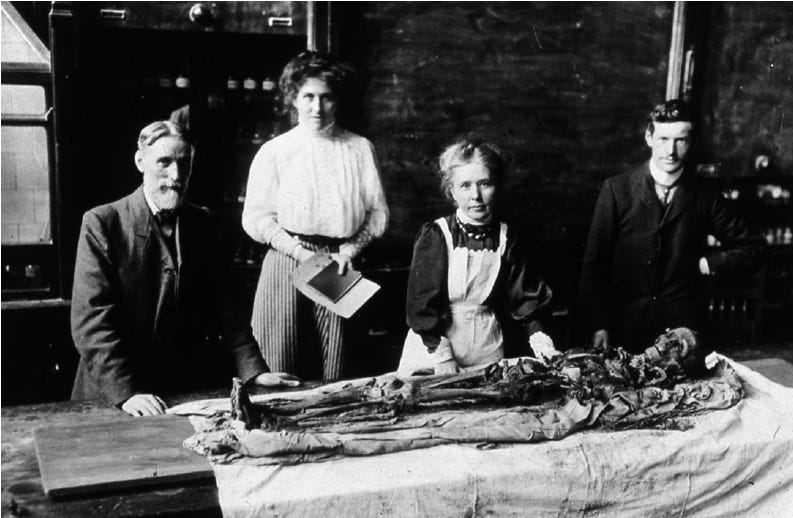
It’s possible that the first mummy unwrapping was hosted in 1821 by Giovanni Belzoni, an Italian adventurer, engineer, and amateur Egyptologist. On behalf of Henry Salt, the British Consul General to Egypt, Belzoni undertook the removal of the Younger Memnon (the giant bust of Ramesses II in the British Museum) from Egypt and shipped it to London. But the most prolific host of mummy unwrappings was Thomas Pettigrew, an English surgeon who led so many public unwrappings for various scientific and archaeological societies that he became known as Mummy Pettigrew.
When Howard Carter, Lord Carnarvon, and their crew excavated the tomb of Tutankhamun during the winter of 1922-1923, the public was already primed to view Egypt as magical and thrilling. After several people connected to the excavation began dying of strange illnesses or accidents, it didn’t take long for members of the public to believe they had awakened an ancient curse…
Recently on Fireside Fables: The Curse of King Tutankhamun
Last week’s episode of Fireside Fables explored the “cursed” excavation of King Tutankhamun’s tomb, discovered in 1922 by Howard Carter in a dig funded by George Herbert, 5th Earl of Carnarvon. (If you’re a fan of Downton Abbey, Highclere Castle is the ancestral seat of the Earls of Carnarvon.)
Recently in The Crossroads Gazette:
In last month’s news roundup, I included a story about the structural problems facing the tomb of Tutankhamun in the Valley of the Kings.
And if you’re still in a spooky mood, you can read this essay on the evolution of the witch in art:



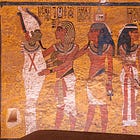

Belzoni is a fascinating figure. There's a marvellous biography to add to your burgeoning reading list which details his impact on Egyptology including the shipping of the obelisk to Paris
🧐 🇬🇧 Fashonistas,
"Walk like an Egyptian....!"💀🫢😏🤷🏽♀️